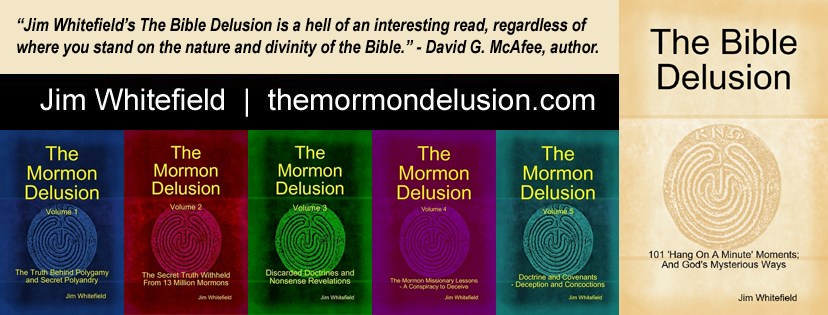The first record of a ‘First Vision’ was not penned until 1832. In it, Smith says he had concluded all sects were wrong; claimed to have seen Jesus; and was fifteen years old (which would make the year 1821).
In 1835 Smith had another couple of attempts at recording his claimed vision in which only angels are mentioned. Finally, in 1838, the now promoted version of events, including God and Jesus, was recorded (but not published until 1842) and backdated to 1820. So, what did Smith finally claim in 1838 as now recorded in History of the Church Volume 1 and cited in The Pearl of Great Price – Joseph Smith History?
1. My father, Joseph Smith, Senior: left… Vermont, and moved to Palmyra… when I was in my tenth year, or thereabouts [1814]. …about four years after …he moved with his family into Manchester [1818]. [The claimed ‘First Vision’ occurred] …in the second year after our removal to Manchester… [1820].
Problem: The family did not move to Manchester from Palmyra in 1818, two years before the supposed vision. They actually moved there no earlier than July of 1822.
2. There was a religious revival in the district [in 1820].
Problem: There was no religious revival in that area in 1820. There was minor one a couple of years earlier, around 1817-1818, and there was certainly one in 1824, possibly even spanning from late 1823-1825 overall.
3. Great multitudes joined various religious parties.
Problem: ‘Great multitudes’ did not join anything in 1820. Half a dozen fewer Methodists were recorded that year, with a small handful of extra Baptists and Presbyterians (the three main players of the period). During the 1824 revival, there were recorded increases in membership of 99 Presbyterians, 94 Baptists and 208 Methodists.
4. Four of Smith’s family had joined the Presbyterians.
Problem: Four of the Smith family members did not join the Presbyterians prior to an 1820 First Vision. Joseph Smith’s mother independently recorded that she and three of Smith’s siblings joined following the death of Smith’s brother Alvin which occurred in late 1823.
5. Smith had personally come across and pondered on the scripture, James 1:5.
Problem: In 1824 the entire Smith family attended a sermon by Methodist minister Elder George Lane who preached on the subject “What Church shall I Join” where his text was James 1:5.
6. Smith went to a grove of trees to ask God “which of all the sects was right, that I might know which to join.”
Problem: Smith’s claim to have gone to a grove to ask God which Church was right is in direct conflict with his 1832 personally handwritten statement confirming that he had already concluded that they were all wrong.
7. Smith was told to join with none of them.
Problem: In his ‘official’ 1838 account, God told Smith twice that he should join none of the Churches as they were all wrong. Later in his narrative, Smith reminds us for a third time that he was told this. Yet in 1828, eight years after the vision supposedly occurred, Smith joined the Methodist Sunday School – only to be asked to leave again as he was considered to be an undesirable due to his reputation as a ‘glass-looker’ (a money-digging con artist).
8. “A few days later…” the persecution started. Smith makes several statements about it.
Problem: No persecution was encountered at all during the period in question; a fact that is now unequivocally accepted and admitted by historians from Mormon Church owned Brigham Young University (BYU).
So, every single detail that Joseph Smith claimed about his First Vision experience is provably fictitious. But that is just the start Smith’s problems. Read the full story, complete with detailed analysis and historical references here.

